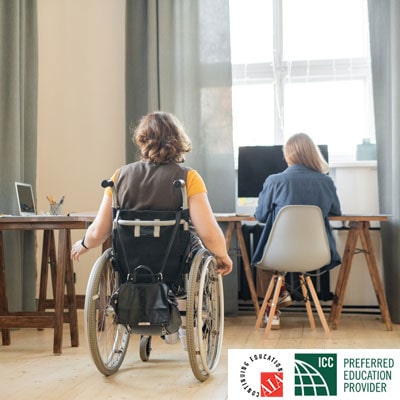
2010 ADA Standards: Key Features and Elements
7 Hours | HSW, LU Credits | Video Course | Course Approval # AIABLTI325.24
Learn how the ADA Standards for Accessible Design applies to construction projects with on-site examples of accessible buildings used by both the public and private sector.
Choose Your State
Add to Cart - Alabama
- Alaska
- Arizona
- Arkansas
- California
- Colorado
- Connecticut
- Delaware
- District Of Columbia
- Florida
- Georgia
- Hawaii
- Idaho
- Illinois
- Indiana
- Iowa
- Kansas
- Kentucky
- Louisiana
- Maine
- Maryland
- Massachusetts
- Michigan
- Minnesota
- Mississippi
- Missouri
- Montana
- Nebraska
- Nevada
- New Hampshire
- New Jersey
- New Mexico
- New York
- North Carolina
- North Dakota
- Ohio
- Oklahoma
- Oregon
- Pennsylvania
- Puerto Rico
- Rhode Island
- South Carolina
- South Dakota
- Tennessee
- Texas
- Utah
- Vermont
- Virginia
- Washington
- West Virginia
- Wisconsin
- Wyoming
Description
Instructor: Rodger PeckThe ADA is one of America's most comprehensive pieces of civil rights legislation that prohibits discrimination and guarantees that people with disabilities have the same opportunities as everyone else to participate in the mainstream of American life, to enjoy employment opportunities, to purchase goods and services, and to participate in State and local government programs and services. The 2010 Standards set minimum requirements, both scoping and technical, for newly designed and constructed, or altered State and local government facilities, public accommodations, and commercial facilities to be readily accessible to and usable by individuals with disabilities.This video course covers the fourth through tenth chapters of the 2010 ADA Standards for Accessible Design. The material for this course is presented by simple narration and power point video presentation, including on-site, real world video examples in various accessible buildings used by both the public and private sector.After completing this course participants will be able to:
- Be able recognize what exterior and interior components can and should comply with ADA standards.
- Outline at least one design strategy based on ADA standards for the construction of either a public or private building.
- Identify requirements for proper maneuvering space, clearance and accessible routes.
- Summarize the options available to the design or building professional when designing a facility per the requirements of the ADA Standards.
- Accessible Routes
- General Site & Building Elements
- Plumbing Elements and Facilities
- Communication Elements and Features
- Special Rooms, Spaces and Elements
- Built-In Elements
- Recreational Facilities
Credit(s) earned on completion of this course will be reported to AIA CES for AIA members. Certificates of Completion for both AIA members and non-AIA members are available to print upon completion of the course.This course is registered with AIA CES for continuing professional education. As such, it does not include content that may be deemed or construed to be an approval or endorsement by the AIA or any material of construction or any method or manner of handling, using, distributing, or dealing in any material or product.
